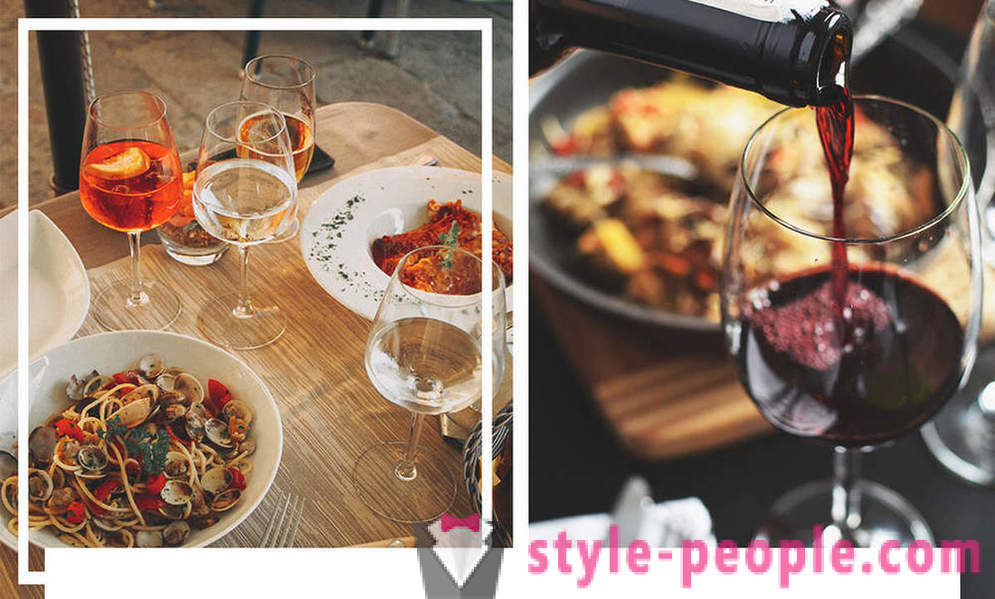Vinotiket: 7 questions about the choice of wine in a restaurant
Sometimes if you leave the choice of alcohol for dinner in the restaurant at the discretion of the person with whom you came out? Most often, it is because we understand that we are not in the grades of alcohol, do not know the subtle notes and flavors, and sometimes tend to overpay for a "familiar" word in the menu. Editorial Heroine decided to answer the most popular questions that arise from those who are not familiar with wine etiquette.
1. What order, if I do not know those wines that offers a waiter?

Usually the wine is named after the grape from which it is made, such as Chardonnay or Sauvignon Blanc. But the grape variety - only one variable affecting the taste of the wine, and not necessarily the main indicator of whether you like the taste.
Instead of worrying, you do not know this variety, look at where the wine brought in Germany, Northern France and Austria - the cool regions, which produce light wines with low alcohol content and acidity. Argentina, California, Chile, Australia, Spain - warm regions, which produce aromatic wines with high alcohol content and deep flavor.
A climate in which vines - an important condition for creating a delicious wine. It affects the acidity, as well as its "body" - the ratio of alcohol and sugar. Choosing wine at the place of its origin is much more useful than memorizing all brands, from beginner all the same is not required to distinguish the subtle grassy notes in the glass.
2. Dry wine - the wine without sugar?
The wine is called "dry" does not have a sweet taste, as most wines, but not because it has no sugar. The thing is that people tend not to take sugar, if the density is less than 9 grams per liter. The rest of its production is slightly different from the production of semi-sweet and sweet wines.
3. Why white wine is served with fish and red - meat?

The rules related to the level of tannins in wine that contribute to the combination of flavors. Most red wines contain a lot of tannins, which are suited to the rich flavor of fatty meat, but do taste metallic fish. But the white wines that do not contain tannins do not have such an impact on products. To assess the tannin content, pay attention to the color of the wine: the darker, the higher level.
Some sommeliers ignore these rules, and you can do the same. Take into account the fact that the regional products used in your dishes usually go well with wines made nearby.
4. What to do when the waiter pours a little wine on trial?
- slightly Twist the glass if you drink white, red or sparkling wine, it will allow it to "breathe" and release the flavors that you have to learn in the process of tasting.
- Smell: the smell of wine is an important part of taste. Breathe in the aroma through the nose, but leave your mouth slightly open to smell and touch your mouth. Glotni little to evaluate the acidity of the wine.
- Make two or three sips, and Hold a little wine in the mouth before swallowing.
If you ordered a glass - try to check if this wine is suitable for dinner. If a miracle does not happen, give the waiter a hint that he may offer a more acceptable option. Never feel guilty for being long ischesch suitable wine - is quite acceptable.
If you order a bottle, the first sip is a test of the fact whether the wine is spoiled. He may have broken a cork, and it could have time to oxidize and become like vinegar. If this happens, you have every right to return the bottle. But if you do not like the taste - to pay still have, it would be enough to learn about their preferences before the tube opened.
5. Why did the waiter fills glass only half?

The correct wine serving is five ounces. Thus, if the pour standard 750 ml wine bottle into equal portions - released five glasses. It is this level allows the wine to open up fully.
6. Why glasses look so different?
Some glasses with a large surface area increase aromatics. Those who drink alcohol too often, do not worry about this, because most forms is another example of serious work of marketers.
7. Is there any difference between the old and the new wine?
All the old wines are usually more expensive, but it is not something that is worth fighting. It loses its fruit characteristics and becomes more earthy. If you like more fragrant and sweet wines - do not waste your money for nothing.













































